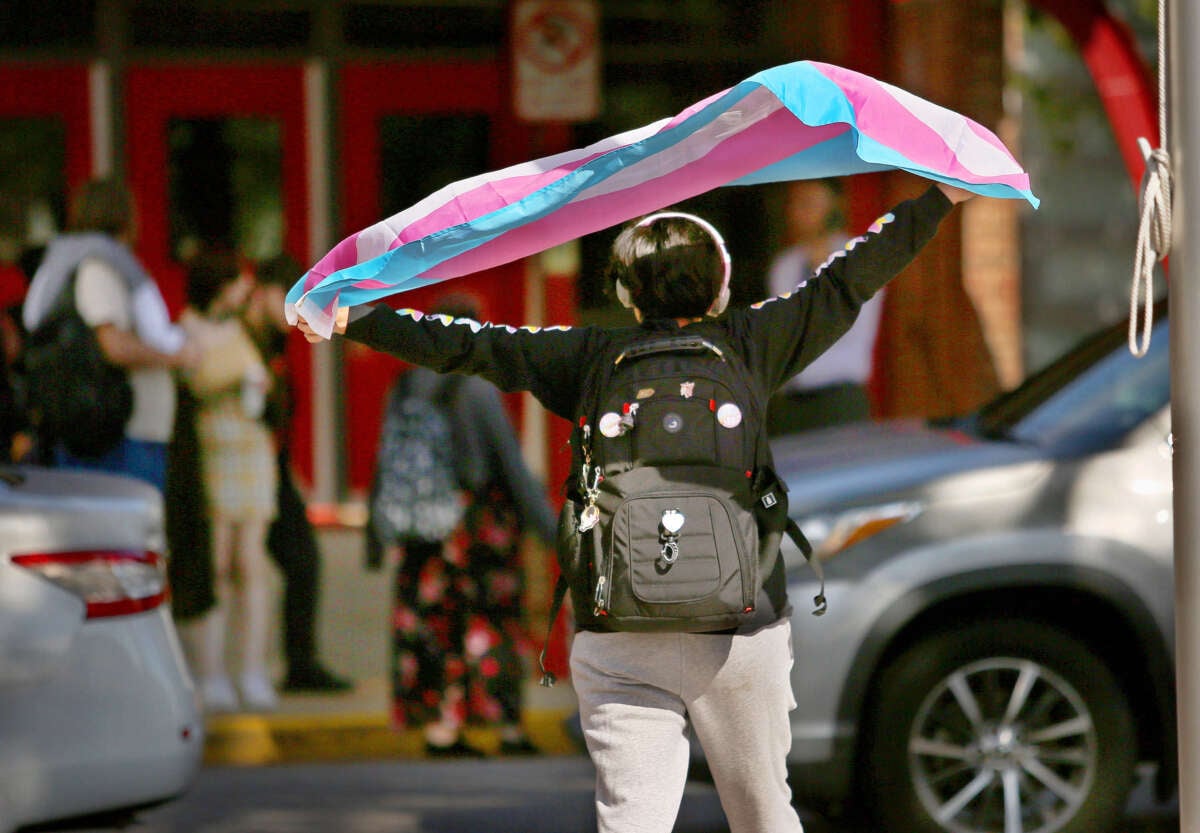The Centers for Disease Control and Prevention (CDC) has released a survey of tens of thousands of high school students across the United States, determining that a sizable number of teens are transgender or questioning their gender identity.
According to their research, around 3.3 percent of teens in the U.S. are transgender. Another 2.2 percent said they are questioning their gender identity. Combined, that means that more than 1 in 20 teenagers in the U.S. are either transgender or questioning.
The report also noted that these teenagers face multiple health disparities compared to their cisgender peers, as many experience gender dysphoria, stigma, discrimination, and threats of violence or actual violent attacks. As a result, rates of depression and suicide ideation are much higher among trans and questioning teens, with more than a quarter (26 percent) saying they have attempted suicide over the past year.
For comparison, only about 5 percent of cisgender male teens and 11 percent of cisgender female teens said they had attempted suicide over the past year, according to the CDC survey.
The poll also shows that about 7 in 10 trans students and students who are questioning their gender identity said they experienced feelings of sadness or hopelessness. The report also noted that 4 in 10 trans and questioning students had experienced bullying from their peers.
Likely due to mistreatment from others, rates of personal connections developed at school are lower for trans teens, with only 36.6 percent saying they felt close to their peers. Individuals who are questioning their gender also saw lower rates of connection, with around 46 percent saying they felt a connection to others, according to the survey. Comparatively, just slightly over half of cisgender female students (50.7 percent) said they felt they were connecting with their fellow students, while more than 6 in 10 cis male students (61.9 percent) felt that way.
For many transgender teens, their home lives are not much better than their experiences in school, the survey found, as 10.7 percent said they experienced an unstable housing situation in the past year, likely due to high rates of family rejection. That rate is nearly six times higher than what cisgender students reported in the survey.
The CDC report included advice for schools across the country to address the rates of depression and suicide ideation among their trans students.
“Intervention opportunities for schools to create safer and more supportive environments for transgender and questioning students can help address these disparities,” the report said. “The findings of this report suggest that more effort is necessary to ensure that the health and well-being of youths who are socially marginalized is prioritized.”
Kathleen Ethier, the director of the division of adolescent and school health for the CDC, spoke to NBC News about the report’s findings.
“That level of distress and that level of experience of stigma and violence is really heartbreaking and is something we must address,” Ethier said, adding:
We’ve done studies that have shown that schools that put a set of LGBTQ+ policies and practices in place that includes having a GSA, having anti-harassment policies that are enforced in schools, providing information and training to teachers and other school staff, identifying safe spaces for LGBTQ+ students — when schools do those things, the health and well being and the mental health of LGBTQ students improves, but also the health and well being of heterosexual students in those schools improves as well.
Additional studies have shown that factors outside of school — including the introduction of anti-trans legislation by state lawmakers, such as bans on gender-affirming care for trans youth — can also have detrimental outcomes. A study from The Trevor Project, for example, found that 90 percent of LGBTQ youth felt that their well-being was negatively impacted by recent political statements or actions.
Currently, more than one third of transgender teens live in states that have enacted laws targeting them, their bodily autonomy and their access to gender-affirming care. Florida clinical psychologist Gary Howell, who practices in a state that has enacted such laws, has said that trans teens are experiencing angst and a sense of dread due to anti-trans legislation.
“These teens were all suicidal specifically because of the legislative moves happening in Tallahassee, the state capital,” Howell said in 2023. “I’m seeing a lot more depression, anxiety, and suicidality these days.”
Rep. Suzanne Bonamici, a Democrat from Oregon, said she was hopeful the new CDC report could help change the minds of her colleagues from across the political aisle.
“Trans students have been the targets of extreme attacks — including bills advanced by some of my GOP colleagues in the Education Committee,” Bonamici said on the social media site X. “I hope this CDC report will help these politicians realize that their fearmongering has put the wellbeing of kids at risk.”
Our most important fundraising appeal of the year
December is the most critical time of year for Truthout, because our nonprofit news is funded almost entirely by individual donations from readers like you. So before you navigate away, we ask that you take just a second to support Truthout with a tax-deductible donation.
This year is a little different. We are up against a far-reaching, wide-scale attack on press freedom coming from the Trump administration. 2025 was a year of frightening censorship, news industry corporate consolidation, and worsening financial conditions for progressive nonprofits across the board.
We can only resist Trump’s agenda by cultivating a strong base of support. The right-wing mediasphere is funded comfortably by billionaire owners and venture capitalist philanthropists. At Truthout, we have you.
We’ve set an ambitious target for our year-end campaign — a goal of $125,000 to keep up our fight against authoritarianism in 2026. Please take a meaningful action in this fight: make a one-time or monthly donation to Truthout before December 31. If you have the means, please dig deep.
